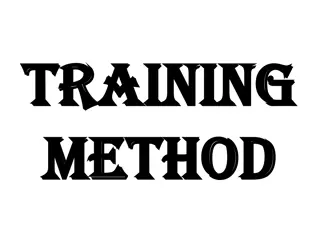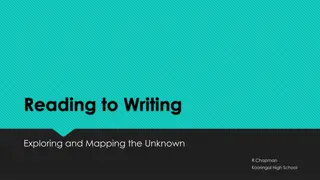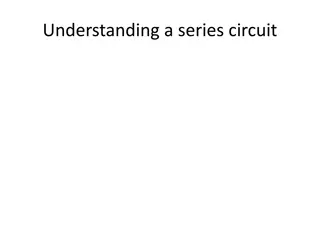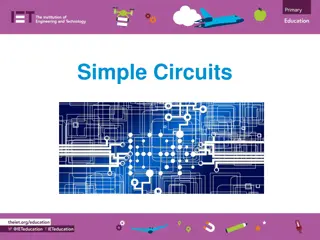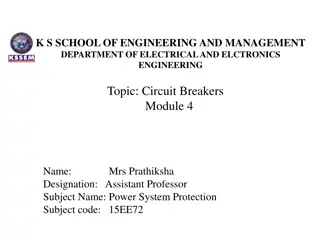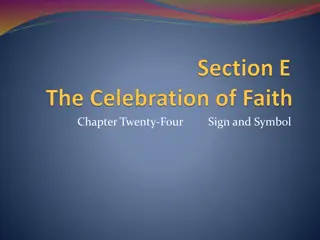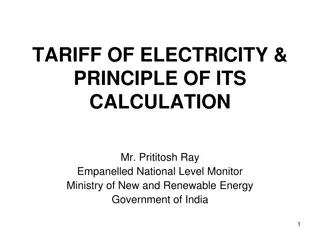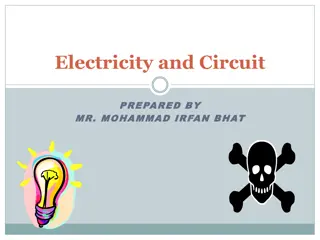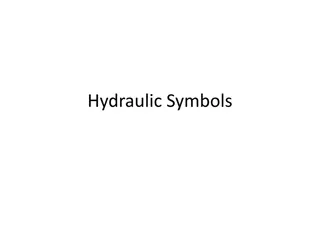Understanding Electricity: Circuit Symbols and Components
Explore the fundamentals of electricity with a focus on circuit symbols, components, series, and parallel circuits. Delve into the difference between complete and incomplete circuits, and discover the importance of using circuit diagrams to depict electrical setups accurately.
Download Presentation

Please find below an Image/Link to download the presentation.
The content on the website is provided AS IS for your information and personal use only. It may not be sold, licensed, or shared on other websites without obtaining consent from the author. Download presentation by click this link. If you encounter any issues during the download, it is possible that the publisher has removed the file from their server.
E N D
Presentation Transcript
L1 Circuit symbols L11 National Grid L2 Current & charge L3 Potential difference L4 Resistance & Ohm s Law L5 Power & energy L6 Electrical power L7 Current in series & parallel L8 Potential difference in series & parallel L9 Sensing circuits L10 Three pin plug Lesson Sequence Pupils should have been taught to: Pupils will be taught: First lesson on electricity, but students will have encountered most of this content in previous key stages. Circuit symbols will be cyclically revisited in many of the future lessons in this topic. Future Learning Specification Prior Learning
SciDoc Circuits & circuit symbols Circuits & circuit symbols Last Lesson Last Term Last Year Stretch & Challenge I do We do You do Do Now Test I do We do You do Do Now
SciDoc Keywords Learning Objectives Keywords Cell Lamp Voltmeter Ammeter Fuse LED LDR Thermistor Recall circuit symbols & describe their uses. Describe the difference between series and parallel circuits. Describe the difference between a complete and incomplete circuit. I do We do You do Do Now Test I do We do You do Do Now
We use circuit symbols to show different components (parts) of an electrical circuit. SciDoc Stretch: Draw any circuit symbols that you can remember from previous years. Circuit diagrams are drawn in pencil and a ruler used to draw the connecting wires. I do We do You do LO: Test I do We do You do LO:
SciDoc Stick the handout into your book. I do We do You do LO: Test I do We do You do LO:
Series circuits follow one single loop. Parallel circuits contain more than one loop. SciDoc Stretch: Draw circuit diagrams with: -A cell and two bulbs in series with the cell. -A cell and two bulbs in parallel with the cell. I do We do You do LO: Test I do We do You do LO:
SciDoc T/N: Complete and incomplete circuits T/N: Complete and incomplete circuits Stretch: Why is it a benefit to put lamps in a parallel circuit? Parts of a circuit will only work if there is a complete circuit. If there is a break in the circuit then it s incomplete. I do We do You do LO: Test I do We do You do LO:
SciDoc Worksheet Worksheet Complete the worksheet! I do We do You do LO: Test I do We do You do LO:
SciDoc Basic answers Basic answers I do We do You do LO: Test I do We do You do LO:
SciDoc Basic answers Basic answers I do We do You do LO: Test I do We do You do LO:
SciDoc Medium answers Medium answers I do We do You do LO: Test I do We do You do LO:
SciDoc Hard answers Hard answers I do We do You do LO: Test I do We do You do LO:
SciDoc Hard answers Hard answers I do We do You do LO: Test I do We do You do LO:
SciDoc Struggle time! Struggle time! Exam question so exam conditions! You have 8 minutes. I do We do You do LO: Test I do We do You do LO:
SciDoc I do We do You do LO: Test I do We do You do LO:
SciDoc I do We do You do LO: Test I do We do You do LO:
SciDoc I do We do You do LO: Test I do We do You do LO:
SciDoc Plenary Plenary 1. Draw a series circuit with 2 lightbulbs, a battery and a resistor. 2. Draw a series circuit with a battery, 2 lightbulbs, a switch, an ammeter and a variable resistor. 3. Draw a parallel circuit with 1 battery and 2 lightbulbs (each parallel to the battery). 4. Draw a series circuit with 1 battery, 1 diode, 1 variable resistor and a lightbulb. 5. Draw a series circuit with a battery, 1 resistor, 1 thermistor, 1 diode and a switch. 6. Draw a parallel circuit with 1 battery, 3 lightbulbs (each parallel to the battery) and a switch that would allow 1 lightbulb to shine even if it opened. (Hard) I do We do You do LO: Test I do We do You do LO:






